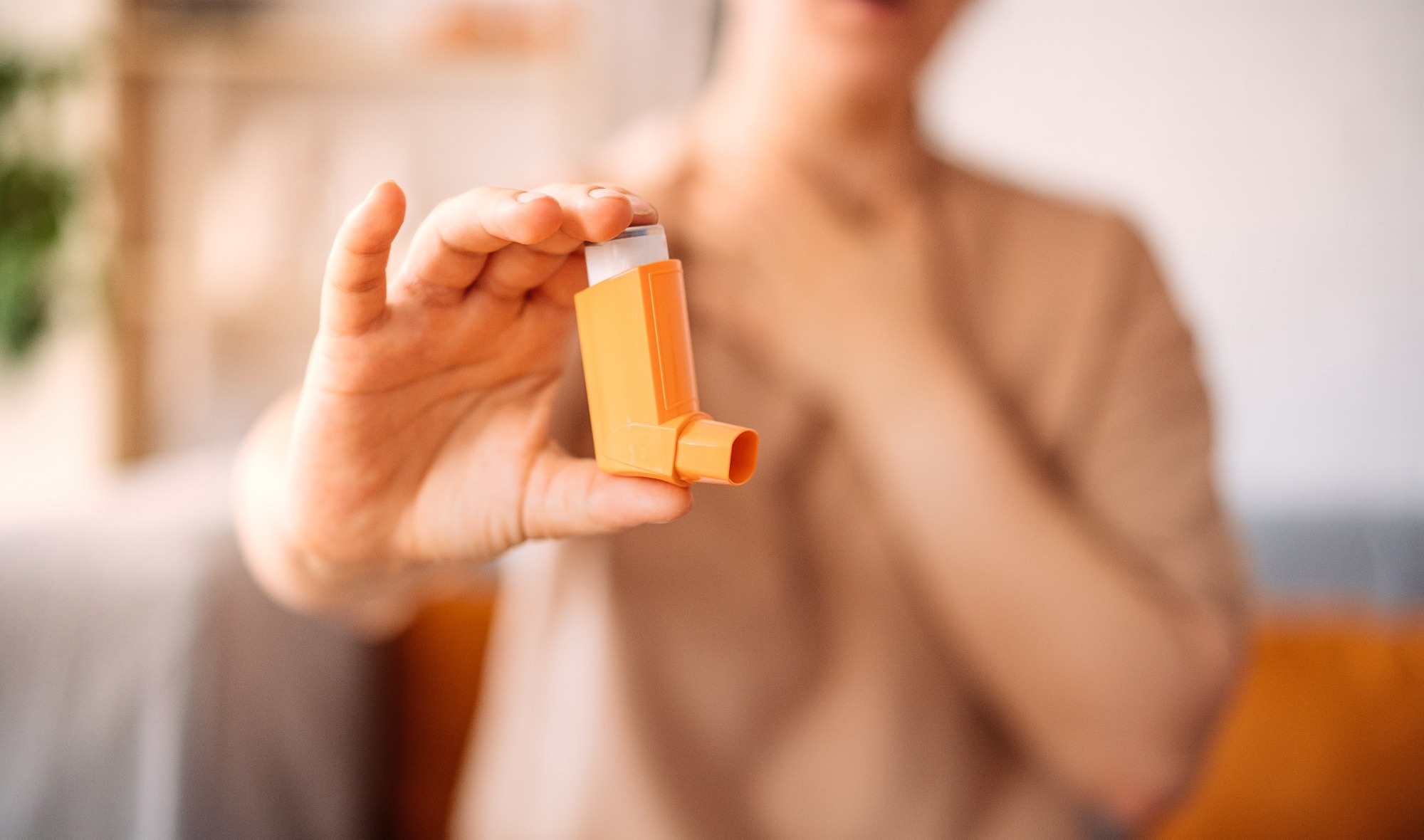A recent study published in Pediatrics investigated whether severe acute respiratory syndrome coronavirus 2 (SARS-CoV-2) infection influences children’s asthma risk.
 Study: COVID-19 and Asthma Onset in Children. Image Credit: Pixel-Shot/Shutterstock.com
Study: COVID-19 and Asthma Onset in Children. Image Credit: Pixel-Shot/Shutterstock.com
Background
Respiratory viral infections in childhood are potential risk factors for asthma. Various studies have reported associations between acute wheezing illnesses in infancy and subsequent progression to asthma later in life.
Further, CoV strains, such as OC43 and 229E, have been isolated from infant/child nasopharyngeal aspirates during acute episodes of wheezing or asthma exacerbations.
Although viral infections are associated with incident asthma, there is limited understanding of the impact of CoVs on asthma development in children. SARS-CoV-2 is a highly pathogenic virus that causes coronavirus disease 2019 (COVID-19).
A study reported a higher incidence of asthma-like symptoms and chronic cough in children following COVID-19 hospitalization. Nevertheless, no study has examined asthma incidence in children following SARS-CoV-2 infection.
About the study
In the present study, researchers investigated whether SARS-CoV-2 infection modified pediatric rates of incident asthma. They used electronic health records of children aged between 1 and 16 receiving care within the Children’s Hospital of Philadelphia Care Network.
Analyses were restricted to those who received SARS-CoV-2 polymerase chain reaction (PCR) testing between March 2020 and February 2021.
Subjects required at least one ambulatory visit the year before PCR testing and a follow-up visit within 18 months post-testing.
Follow-up commenced 30 days following the PCR test. Asthma was defined as having at least one International Classification of Diseases (ICD) code for asthma and a prescription for asthma-related medicine.
ICD codes for post-viral wheeze and reactive airway disease were not considered. Asthma-related medicines included corticosteroids, β agonists, biologics, and leukotriene modulators.
In a sensitivity analysis, asthma was defined as having an asthma ICD code at ≥ two follow-up visits six months apart and a prescription of asthma-related medicine.
Covariates were compared between test-positive and -negative groups. Multivariable Cox regression models estimated hazard ratios of new asthma diagnoses between groups within the 18-month window; analyses were adjusted for covariates. Additionally, sub-group analyses were conducted for the following age groups: 0–4, 5–11, and ≥ 12 years.
Findings
The study included 27,423 subjects; 11.5% tested positive for SARS-CoV-2, who were more likely to be older, Medicaid insured, Black, and have a higher body mass index (BMI).
SARS-CoV-2-positive individuals were more likely to have allergic rhinitis but less likely to have food allergies than those who tested negative. During the follow-up, 573 individuals were diagnosed with asthma, including 516 subjects who tested negative for SARS-CoV-2.
There was a trend of reduced incidence of new asthma diagnoses among subjects with a positive SARS-CoV-2 test throughout the follow-up.
There was no association between SARS-CoV-2 positivity and new asthma diagnoses. However, allergic rhinitis, comorbid food allergy, and Black race were associated with a higher risk of new asthma diagnoses. By contrast, older age was associated with a lower risk.
In the sensitivity analysis, 418 individuals, including 35 SARS-CoV-2-positive individuals, developed asthma. Consistently, there was no association between SARS-CoV-2 positivity and new asthma diagnoses.
Nevertheless, age, atopic comorbidities, and Black race were associated with new asthma diagnoses. In sub-group analyses, SARS-CoV-2 positivity was not associated with new asthma diagnoses across age categories.
However, atopic comorbidities and race were associated with new asthma diagnoses among toddlers. Further, toddlers who had a preterm birth and those with a higher BMI showed an increased risk of new asthma diagnoses.
Female sex in teenagers and school-age children was associated with a higher risk of new asthma diagnosis. Other risk factors had no associations with new asthma diagnoses in teenagers and school-age children.
Conclusions
The researchers did not find associations between SARS-CoV-2 positivity and asthma diagnosis within 18 months following the PCR test in children.
Asthma incidence was higher among young children, and older age was associated with a lower risk of new asthma diagnoses. Further, atopy history was associated with a higher risk of asthma diagnosis.
Notably, the use of data from a single institution limits the generalizability of findings. Moreover, COVID-19 severity could not be considered due to the limited number of infected subjects.
Besides, the exposure window preceded the appearance of SARS-CoV-2 variants; as such, these variants might differently impact asthma risk.

 PARENTING TIPS
PARENTING TIPS PREGNANCY
PREGNANCY BABY CARE
BABY CARE TODDLERS
TODDLERS TEENS
TEENS HEALTH CARE
HEALTH CARE ACTIVITIES & CRAFTS
ACTIVITIES & CRAFTS

